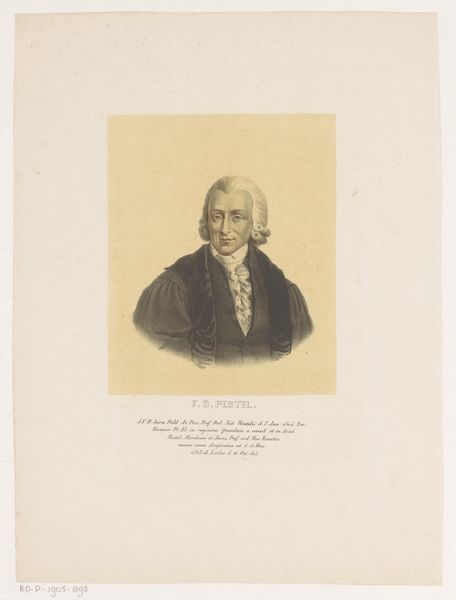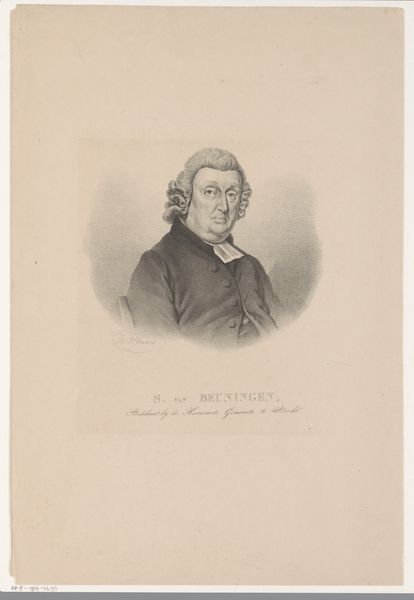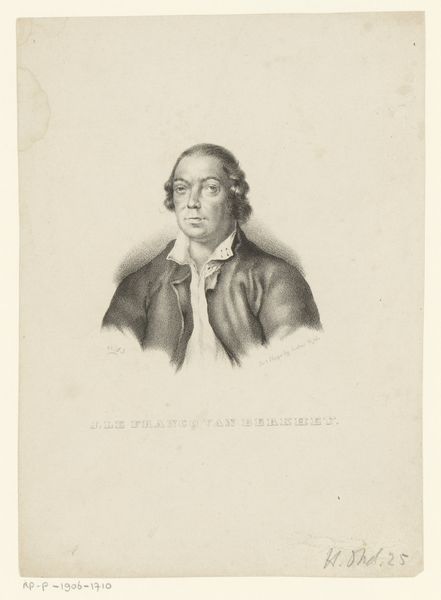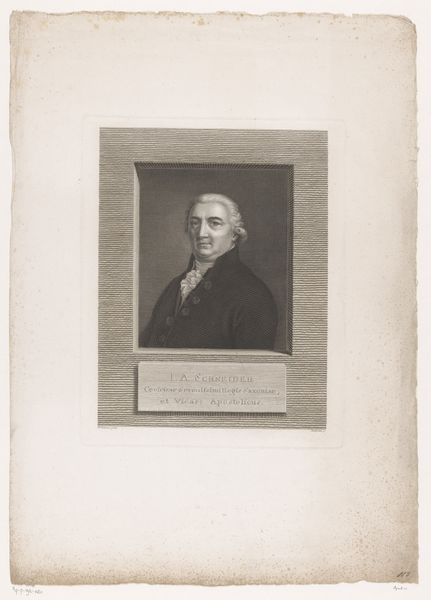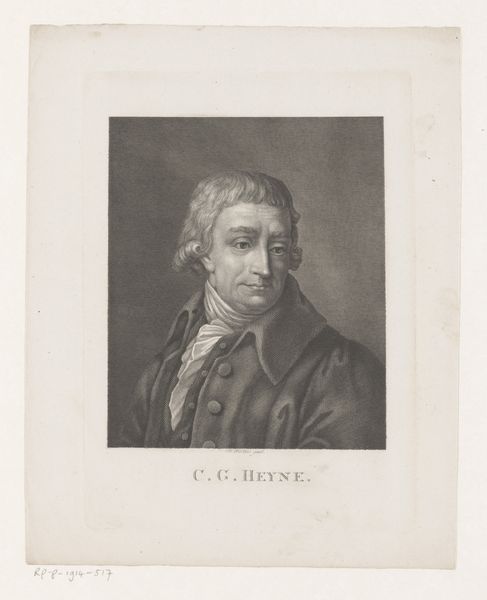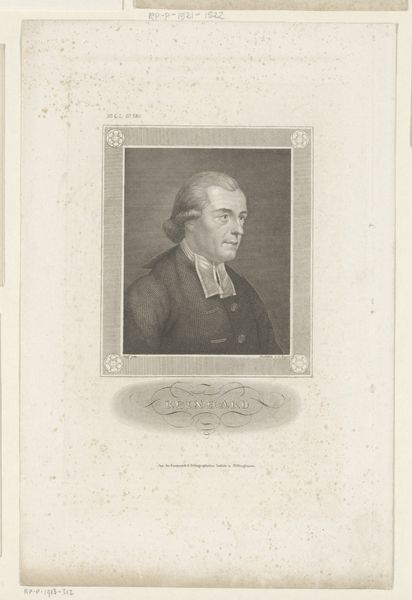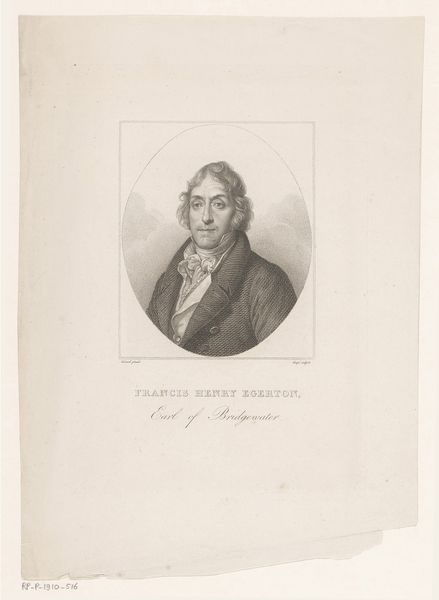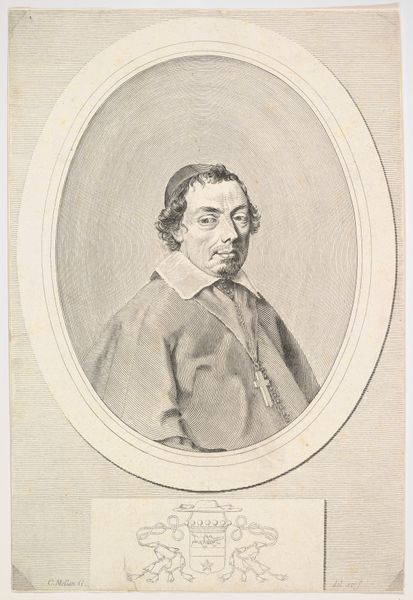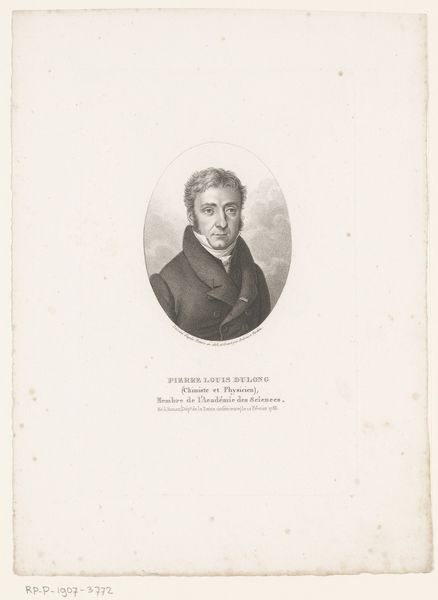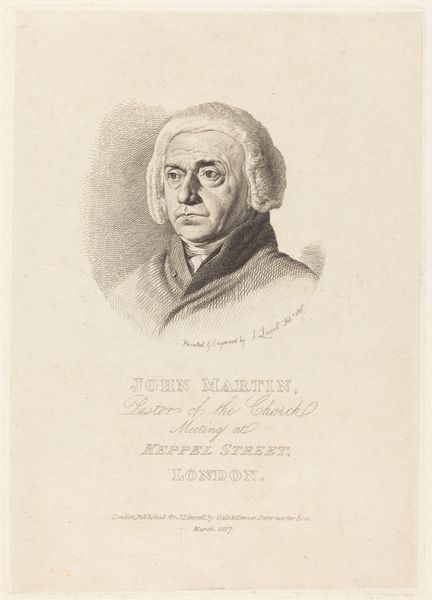
print, engraving
#
portrait
#
16_19th-century
# print
#
engraving
#
realism
Dimensions: height 340 mm, width 250 mm
Copyright: Rijks Museum: Open Domain
Editor: This is a print titled "Portret van O. C. Wolterbeek," created sometime between 1828 and 1843 by Jan Lodewijk Jonxis. It looks like an engraving, a medium I don't often see portraits rendered in. It definitely has a formal and perhaps even stern quality. How do you interpret this work, especially considering its historical context? Curator: The "stern" quality, as you say, might reflect the sitter’s social positioning. The Reverend Wolterbeek was likely a man of significant influence within his community. The portrait, and its distribution through print, serves not just as a likeness, but as a statement of power and authority. Who had access to portraiture like this, and what did that signify? What visual cues suggest this social hierarchy to you? Editor: I suppose the wig and formal attire speak to status, maybe education as well? Were printed portraits common for disseminating information about influential figures? Curator: Exactly. This print circulated within a specific social sphere, reinforcing existing power structures. The meticulous detail achieved through engraving conveys a sense of realism, which in turn legitimizes Wolterbeek's position. How does this contrast with more contemporary forms of portraiture and representation? Think about who gets represented now, and by whom. Editor: Today, photography and digital art offer broader access to portraiture, often challenging traditional power dynamics by focusing on marginalized communities. Here, Wolterbeek's gaze seems to assert dominance, while modern portraiture often seeks to empower the subject. Curator: Precisely. And what does that say about societal shifts in how we view leadership and representation? Consider also the role of institutions like the Rijksmuseum in displaying such images – are they reinforcing or challenging historical narratives? Editor: I hadn't considered the museum's role that way, but it is really something to think about. Thanks, that perspective really helps me contextualize this piece. Curator: Absolutely! These historical images have reverberating effects on modern cultural ideas about leadership and recognition.
Comments
No comments
Be the first to comment and join the conversation on the ultimate creative platform.
